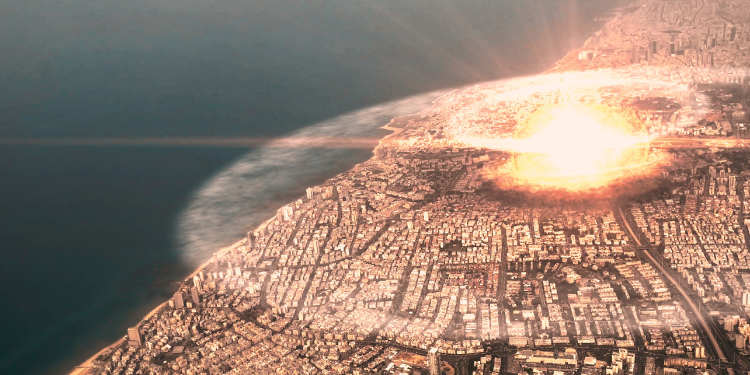The Doomsday Clock is a symbolic representation made by atomic scientists to show how close the world is to man-made nuclear Armageddon is 90 seconds to midnight, the closest it has ever been since its creation.
Sure, its accuracy and relevancy could be debated, but the fact that China, Russia, and the US are all spending enormous sums of money to expand or modernize their nuclear arsenals is NOT. And now, after three decades of relative security, nuclear war is a real possibility again and the US could be a target. Your home could be in the danger area for a nuclear strike. That means you need to know what you’re going to do – and, most importantly, where you’re going to go – if a nuclear attack seems imminent.
What Are You Hiding From?
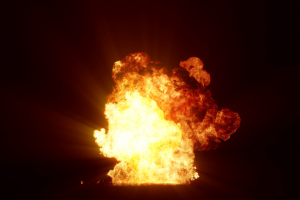 As terrifying as the sheer power of nuclear weapons is, that isn’t what makes them so difficult to protect yourself against. The big problem is that they’re dangerous in so many different ways.
As terrifying as the sheer power of nuclear weapons is, that isn’t what makes them so difficult to protect yourself against. The big problem is that they’re dangerous in so many different ways.
A conventional bomb, no matter how big it is, just causes blast and fragmentation. Nuclear weapons do that, too, but there are other deadly effects along with them. Here’s a quick summary of what you need to survive:
Heat
When a nuclear weapon goes off, a thermal pulse radiates out at the speed of light. This can start fires, and cause serious burns, miles away. The thermal danger radius depends on the size of the weapon and the weather conditions – rain or mist will reduce it.
Blast
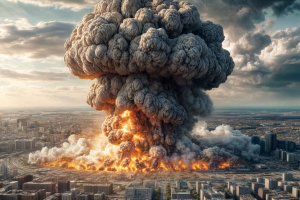 Following the thermal pulse, a powerful blast wave races out from the explosion. This will destroy buildings and turn wreckage and loose objects into lethal projectiles. It can also kill through overpressure; close enough to the explosion the blast raises pressure so much it will simply destroy vital organs.
Following the thermal pulse, a powerful blast wave races out from the explosion. This will destroy buildings and turn wreckage and loose objects into lethal projectiles. It can also kill through overpressure; close enough to the explosion the blast raises pressure so much it will simply destroy vital organs.
After the initial blast wave, there will be a second wave in the opposite direction, as air rushes in to fill the partial vacuum left by the blast. This can come from a few seconds to as much as two minutes later.
Radiation
There are actually two radiation hazards, but the first – a pulse of gamma rays and hard X-rays from the explosion – is only dangerous out to about 3,000 feet, and if you’re that close it’s unlikely you’ll survive the heat and blast anyway. The more dangerous one is fallout. If the weapon’s fireball touches the ground huge quantities of material will be sucked up through the fireball, mixing with radioactive particles from the weapon. Minutes later this will start falling back to earth. Smaller particles can be blasted high into the stratosphere and keep coming down for weeks, often landing thousands of miles from the explosion. The fallout will be dangerously radioactive for around two weeks. Most probably there will also be an EMP strike. These are the 7 actions you should take immediately after the fallout.
Where Should You Hide?
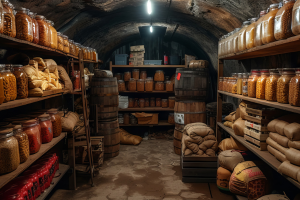 The different dangers of a nuclear weapon make it complicated to choose a good shelter. Any refuge needs to be physically strong, to resist blast and flying debris – but it also needs to be non-flammable and heat resistant, or the thermal pulse could set it on fire.
The different dangers of a nuclear weapon make it complicated to choose a good shelter. Any refuge needs to be physically strong, to resist blast and flying debris – but it also needs to be non-flammable and heat resistant, or the thermal pulse could set it on fire.
You need to be surrounded by lots of dense material, too, to block the radiation from falling. It can be difficult to find a hiding place that combines all these characteristics.
The best option, obviously, is a nuclear bunker. Being underground is excellent protection; the heat and blast will just roll over the top of you, and the surrounding soil protects against fallout. If you can get three feet of earth all around you, you can wait out the radiation in complete safety.
Of course, most of us don’t have a nuclear bunker, but root cellars and even basements can be adapted. A root cellar is usually a better choice because it already has a thick layer of earth on top to keep the heat out. It works just as well at keeping radiation out. If you decide to shelter in your home’s basement there are a couple of things to be aware of.
One is the risk of being trapped in there if the house collapses but the basement survives. The other is that, unlike a bunker or root cellar, your basement doesn’t have a radiation-resistant roof. Most basements just have a normal timber floor, and if fallout gets into the house – which it will, if the last breaks any windows or damages the roof – the basement is going to get irradiated. Look at designating one part of the basement as a shelter, then preparing it by adding mass to the floor above that section. A few layers of sandbags will do well, but anything that adds mass helps – a layer of books, for example. Be aware that if the basement doesn’t have load-bearing walls you might need to use props or timber to brace the floor up and take the weight. You can learn here how to build an underground bunker for less than $400. This step-by-step guide makes it affordable and practical to create a safe retreat, offering protection from nuclear fallout, severe storms, or other catastrophic events. It’s a must-have resource for anyone serious about being ready for the unexpected.
What If You’re Not At Home?
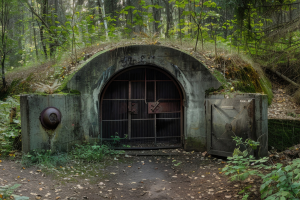 Ideally, if a nuclear attack comes in you’ll be at home or your bugout location, with a well-stocked shelter nearby so you can get in there, ride out the strike in your blast-proof refuge, then have your supplies available as you wait two weeks for the fallout’s radiation to decay.
Ideally, if a nuclear attack comes in you’ll be at home or your bugout location, with a well-stocked shelter nearby so you can get in there, ride out the strike in your blast-proof refuge, then have your supplies available as you wait two weeks for the fallout’s radiation to decay.
But what if you’re away from home when the sirens go off? Can you still find safety from the initial effects of the weapons? I would go in the wild if I didn’t have a bunker. And I’m talking about bugging out necessarily, but to learn how to turn the wild into your second home. This is a great guide where you can find almost everything you need to know about surviving out there with nothing other than what you can carry in a backpack.
Yes, you can. The immediate effects of the weapon, heat, and blast, will be over within a couple of minutes of the explosion. Fires and collapsing buildings will be a danger for much longer, but as soon as the second, inward blast wave passes over you it’s safe to leave cover. What sort of cover should you find, though? Ideally, get underground. A subway station or underground parking garage will protect you from heat and blast. So will a strongly built concrete building.
Related: Actions To Take Immediately After A Nuclear Blast
Anything that gets you below ground level will give good protection. Even lying on the ground behind a low concrete wall or raised flowerbed will protect you from the heat flash, blast, and debris. Anything that puts a solid mass between you and the likely direction of the explosion will improve your chances.
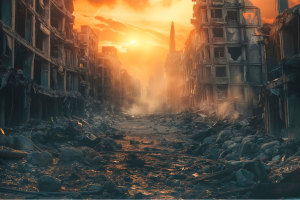 After the heat and blast, you’ll have at least several minutes before fallout starts descending – and that’s in the worst case, which is a nearby ground burst.
After the heat and blast, you’ll have at least several minutes before fallout starts descending – and that’s in the worst case, which is a nearby ground burst.
An airburst, which is the favored way to destroy large, soft targets like cities, will produce hardly any fallout at all. The real danger after the initial attack is fallout from more distant ground bursts descending over the next few days.
If you’re not at home when the attack happens you’ll have a window to time to get back there, or at least to find a safe (ideally underground) location to wait out the danger. If fallout starts descending in dangerous quantities you’ll notice it; it resembles fine sand. When you see it starting to fall it’s time to get under cover and put as much concrete or soil as possible between you and the outside world.
If you want to take steps to secure your future, you can find here the perfect guide to get started. Inside, you’ll discover 70+ DIY projects anyone can build to ensure access to vital resources like power, clean water, and food in the aftermath of a major crisis. These practical solutions can help you prepare for nuclear-related events, long-term blackouts, economic collapse, and more.
Hiding from a nuclear attack, at the end of the day, is all about maximizing the solid material between you and the weapon. If you hear a warning siren or a nuke detonate, get behind something. Then look around for the opportunity to get underground. Then get home or into a fallout-proof location to wait out the radiation danger. Nuclear weapons have awesome power – but if you know what to do, and you’re outside the radius of complete destruction, you can survive.
You may also like:
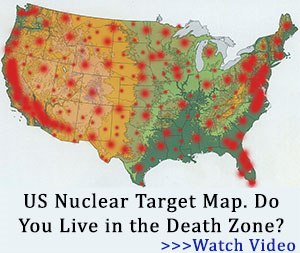 8 Trap Hacks That Every Prepper Should Know
8 Trap Hacks That Every Prepper Should Know
The Bunker Food You Need To Have Right Now (Video)
The Best Over The Counter Drugs You Should Hoard
The First Water Source That Will Disappear in a Crisis
DIY Mosquito Trap
Read the full article here
